Every hunter needs to know when deer move around, eat, and engage in the most activity. If you’re out hunting, you’re more likely to be successful if you are in the woods at these times. So, when are deer most active, and why do their activity levels change at different times of the day and night? So, let’s find out when are deer most active?
While some people believe deer are nocturnal, they’re not. Instead, they’re crepuscular creatures. This means that deer are most active around dawn and dusk. They’re usually less active during the night and through most daylight hours.
Here’s an overview of this guide to when deer are most active:
- What time of day do deer move most?
- Are deer more active in the morning or afternoon?
- Weather affects deer activity
- Level of deer activity in the afternoon
- When are deer most active in the morning?
- Times of day deer eat the most
What Time of Day Do Deer Move Most?
Table of Contents
ToggleAs we mentioned earlier, deer are most active at dawn and dusk. This means they move around the most during these times of the day and evening.
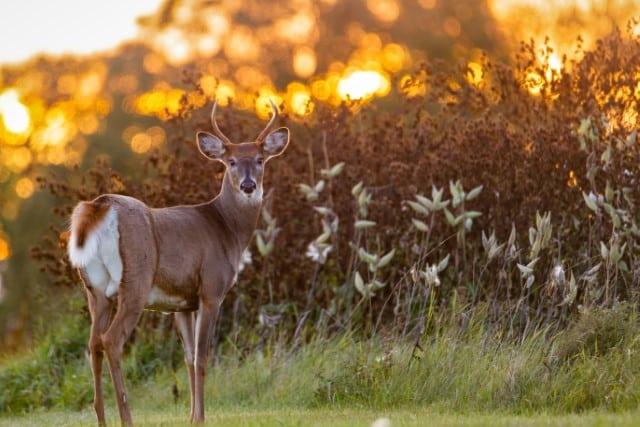
Some hunters and experts argue about whether deer are more active in the morning or the evening.
Most hunters and deer enthusiasts agree that deer are most active at dawn. This is a favored time for hunting.
Dusk is the second most popular time for deer to move around.
It’s uncertain why deer are more active at dawn than at dusk. There are a variety of factors that contribute to deer activity.
Some people even believe that the moon influences deer behavior. However, most hunters and scientists discredit this theory.
Weather has a huge impact on deer activity. Deer tend to be less active when it’s raining, but deer may move more than usual on windy days.
So if it’s raining in the morning but not in the evening, they will probably be more active in the evening that day.
Are Deer More Active in the Morning or Afternoon?
Generally speaking, deer are more active in the morning than in the afternoon. This can vary depending on the location and time of year.
Deer are most active during what is known as the rut (mating season). It is when bucks compete with each other for dominance.
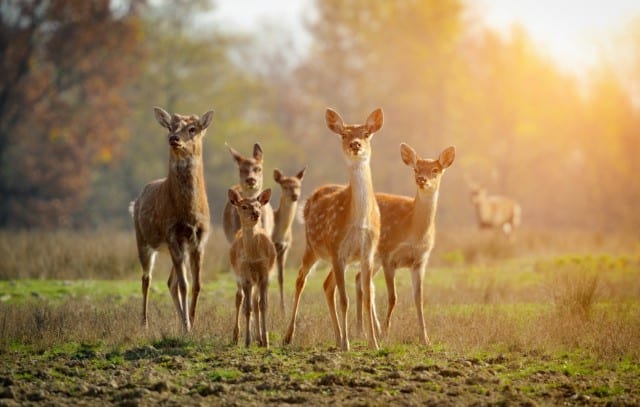
During the rut, bucks are more active during the afternoon than they are at other times of the year.
Keep in mind that sunrise and sunset times differ depending on where you are. The length of sunsets and sunrises will also change throughout the year.
Check with the local weather report before heading out hunting, especially if you’re in an area you’re unfamiliar with.
Weather Affects Deer Activity
Deer tend to be most active when the weather is cold. There are different potential explanations for this.
One is that when deer are cold, they move around more to stay warm.
However, most scientists don’t agree with this theory.
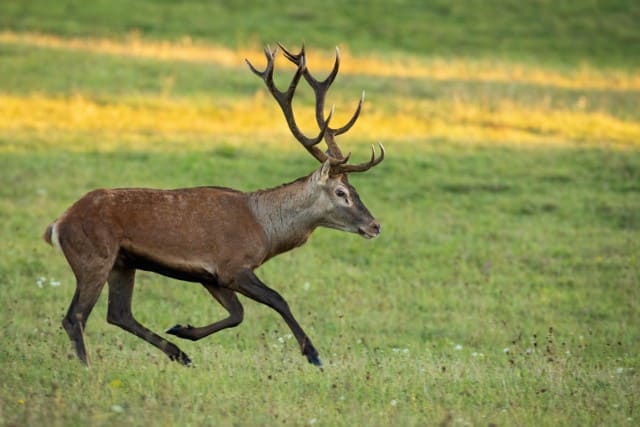
After all, deer have fur coats to keep them warm.
Another theory is that cold temperatures make deer more hungry. While they are good at keeping warm, it does put a strain on their body.
The most compelling explanation is that it’s more difficult to find food during the cold winter months. This causes deer to move around more than they need to in the spring and summer, when the vegetation they like to eat is plentiful.
Despite being more active when the temperatures are lower, deer move slower during the winter months and like to find the perfect spot to bed down.
Deer don’t hibernate like bears, but they do slow down. Deer don’t have heaters and shelters like we do.
It’s impossible to say at exactly what temperature deer are most active. There are many types of deer in the world, and their habitats are diverse.
Some deer might be more active at one temperature, whereas others move around more at another. It could also be that deer become more or less sensitive to temperature as they become adults and grow older.
Level of Deer Activity in the Afternoon
Deer are usually quite active in the afternoon, albeit less active than in the morning (around dawn) or evening (around dusk).
Whitetail deer don’t sleep through the night or day like humans do. Instead, they take short naps.
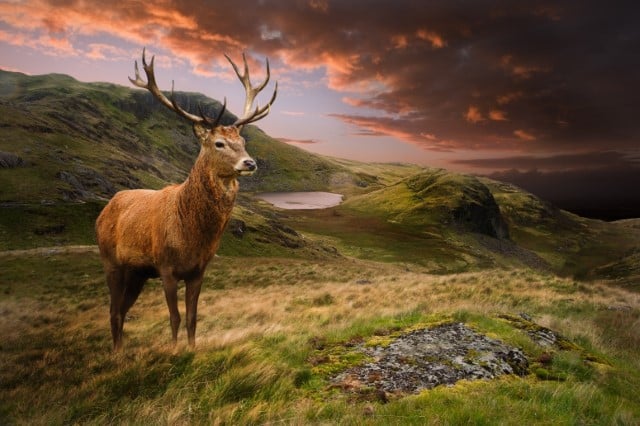
This is important, as they have to be continually alert for potential predators. If they slept continually for long periods as we do, wolves and bears would find them an easy target.
Deer need to be ready to jump up and run away at a moment’s notice.
The rut (mating season) is one of the most active times of year in general.
This usually takes place in the fall. In the northern hemisphere, the rut generally occurs in October and November.
However, there are regional variations. In the Southwest, the rutting season lasts longer and later.
If a deer finds a good food source during the afternoon, it will probably be more active than usual in the afternoon.
The best way to figure out if a deer is going to be afternoon is to think about the situation. If it’s winter and the sun is setting earlier, a deer is also going to be more active in the afternoon than they would be in the summer.
So, should you go deer hunting in the afternoon? Overall, the answer is no.
You probably won’t have success at that time of day.
However, in general, afternoon is probably not the best time to be out looking for deer.
When Are Deer Most Active in the Morning?
Generally speaking, deer are most likely to be active right before dawn. This is just before sunrise.
They will still be active once the sun has risen, but not as much as during the day.
There are several reasons for this. First, deer prefer to be active when the temperatures are a bit lower.
Sunshine means higher temperatures as well as more visibility. That’s why dedicated hunters will wake hours before sunrise and scout out their spot.
Ideally, you want to be active before the deer. They are much more alert to noise and movement than humans.
If you head out after sunrise, it might already be too late.
Times of Day Deer Eat the Most
Deer don’t have set meal times like humans. Their digestive system doesn’t process food the same way that we do.
If they ate as much as we did at once, they wouldn’t be able to move after eating!
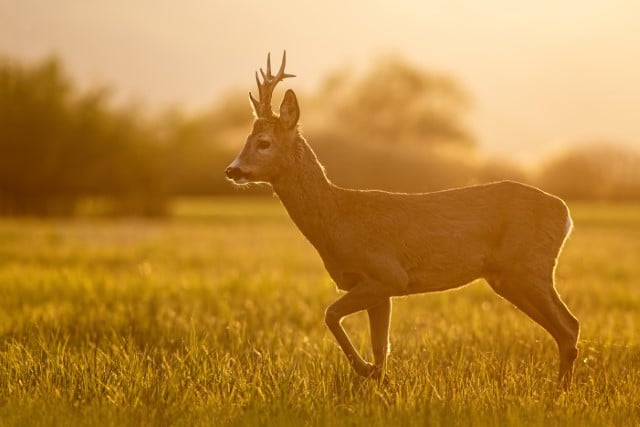
Instead of eating set meals, deer graze throughout the day.
Deer usually eat the most during the morning. However, they will eat anytime during the day.
Unlike us, deer don’t always know where their next meal is coming from.
They will eat food when they have it because they aren’t certain when they will get more.
If you’re a hunter and have a deer feeder or food plot set up, it’s not a bad idea to invest in a camera. That way you can check for patterns and see if there is a certain time deer are more likely to eat.
If you aren’t hunting on your own land, check the internet to see if there are any hunting cameras available online. Sportsman’s Guide has a nice selection here.
Or better yet, ask local hunters. They have the most knowledge of the area.
Now You Know When Deer Are Most Active
Deer activity is complex. As more research is conducted on deer behavior, it’s becoming easier to track their habits.
However, nature is unpredictable. Deer are smart and always full of surprises, and weather can always change at the last minute.
Generally speaking, it’s safe to say that deer are most active during dawn and dusk. This is known as crepuscular behavior.
Beyond this, deer tend be more active during the morning than in the evening.
If you’re looking for deer, it’s best to head out before the sun rises so you can be positioned to see them without moving around (movement makes it easy for them to see you).



